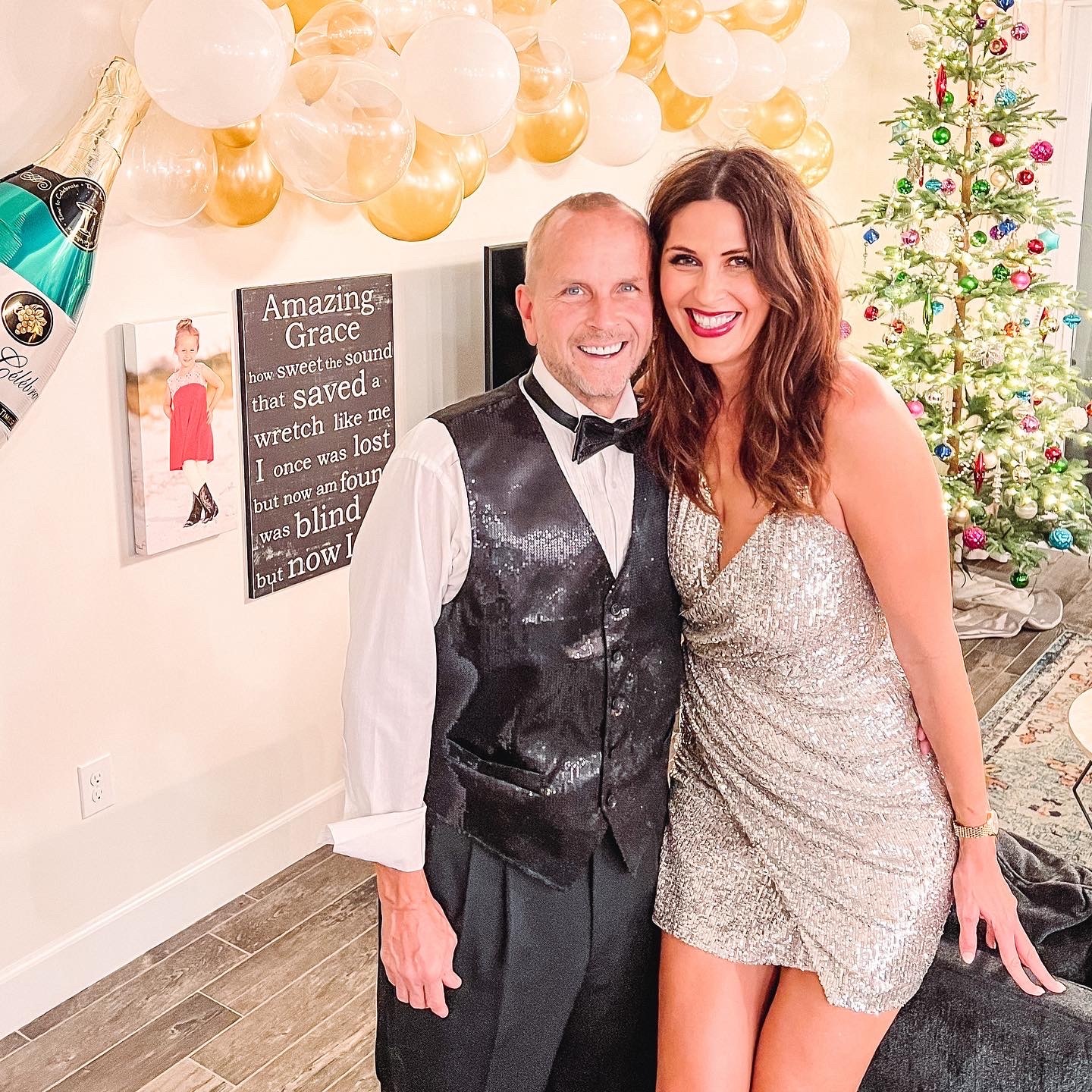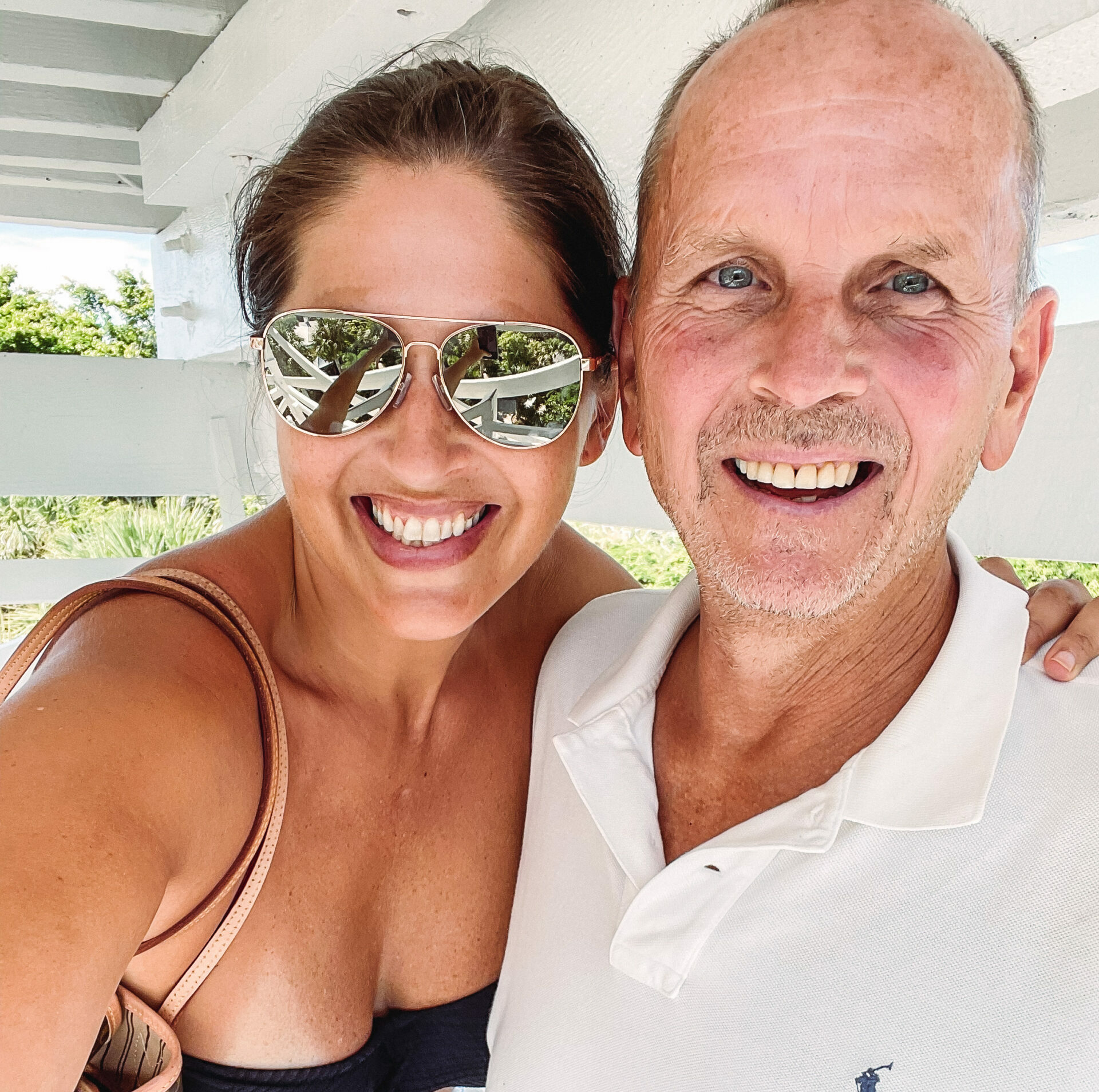“I want to lose weight & get healthy, but it’s too hard to do it all on my own. So how do I get my spouse on board?”
It’s a question we hear all the time, usually from women who are thinking about joining our TAS program, and honestly, it’s an important one, because the reality is that anything in a relationship is easier when you’re both on the same page and working towards a common goal.
But I think what they’re REALLY saying is that “I can see how this would help me, and I really want to make this change in my life, but if my husband is not on board—if he’s constantly complaining about the foods we’re eating, or if he’s not supportive, or if I have to end up cooking twice for every meal, then this is NEVER going to work for me.”
And honestly—I get it.
Ready to lose weight and get healthy for life without dieting, drugs or making yourself miserable?

Our free on demand video training will help you understand why it’s been so hard and what do to about it.
I really, really do.
Because I struggled with losing weight and getting healthy for a VERY long time—literally years.
And in the course of that struggle, I tried so many different things and so many different diet plans. Honestly I think I’ve tried them all, everything from Weight Watchers to juice cleanses and food delivery programs to crazy things like the Cabbage Soup Diet and something called the GM Diet. That one was super weird.
And while MOST of the time my husband was pretty supportive, he definitely wasn’t interested in joining me in what he viewed as mostly ridiculous plans that would probably just end up making me miserable and not work anyways. Even though he wanted to lose weight too. Every time he’d say something like “yeah, I’m not doing that.”
But as the years went by, I finally realized I needed to do something different. Something I had never tried before. I needed to stop looking for a quick fix and figure out what was causing me to gain weight in the first place so that I could fix it for good.
And that’s finally when I started doing a lot of research–books, academic journals, diving into actual studies that had been done. And honestly, what I discovered shocked me, because it became SO obvious why everything I had ever tried up until that point hadn’t worked. (If you want to know more about that, watch this free video!)
So as I started doing all this research, I started making changes to what I was eating, and I also started talking to my husband about it. Like I said, I was pretty fired up, so honestly I couldn’t really STOP talking about it. And I still can’t, obviously.
But he was open to it, because honestly it made a lot of sense. My husband Chuck is an engineer and he’s super logical and observant. And right away he started connecting the dots and seeing how this new way of eating tracked with the results that he had experienced in the past.
And at that point, he was ready to lose weight and get healthy as well. We had just gone on a 9 day motorhome trip to Wisconsin with a group of friends, and while we had an amazing time, we both came back the heaviest we had ever been.

So we made the changes together, at least mostly. I do most of the cooking, at least for dinner, so I would just cook meals for the whole family that were in line with how I wanted to be eating. And honestly, it wasn’t hard because the food we were eating was SO delicious—literally the same recipes you’ll find on this website.
And after struggling for so long, it was like the weight just literally melted away. It felt SO easy compared to everything I had tried before. I lost 40 pounds in 6 months, and Chuck lost 30. Our aches and pains went away. We started sleeping better. We had so much more energy. Our sex life got better.
It all sort of fell into place, and honestly it felt like a miracle.

And when I look back, I see the fact that doing it together was a really, really big piece of the puzzle.
Could I have had the same results all on my own?
Yes, probably.
But doing it together gave us a shared purpose. It gave us accountability. It gave us a reason to cheer each other on. It kept us on track and helped us avoid temptation. And I think ultimately it actually made our marriage stronger.
And that’s a big deal.
And that’s why this topic is a big deal to me too. Because I know how powerful it can be to have your spouse on board when you’re trying to get healthy. It’s like having a traveling companion on your journey to get healthy.
Tips for Getting Your Spouse On Board
Of course that begs the question—how do you actually convince your spouse to get on board?
Because honestly, it can feel like a bit of a dance sometimes! It’s not something that you ever want to be manipulative or sneaky about, because in the end your goal should be to have a mutually supportive relationship, where you both feel seen and heard and valued.
But the good news is that if you approach it with an open heart, and just keep communicating until you find common ground, it’s definitely possible to get your spouse on board. Here’s a few tips to help!
- Start by talking about YOUR reasons for wanting to make the change.
Honestly, I think the best way to broach the topic is to talk about why it matters to YOU—not to make it a demand that they change with you. Really focus on what YOU are hoping to accomplish and why it’s important to you. Get specific about the changes you want to see in your life, and how getting healthier could be a step toward achieving them.
This website is jam-packed with really good arguments for why changing your lifestyle is important. I would write down the ones that feel most compelling to you, or even ask your spouse to listen to an episode of our Ditch the Carbs podcast together, or to watch our free training video together with you.
And then ask your partner why they think it might be a good idea—or why they might be interested in joining you. Most of the time, people just want to feel heard and respected.
But start with an open, honest conversation.
- Respect your Partner’s Goals & Concerns.
Next, be willing to respect their goals and reasons for wanting to make changes too. Maybe it’s something totally different than yours—which is totally ok! Encourage them to talk about their own goals and reasons, so that you can find common ground.
Along those lines, be open to hearing their concerns and reservations. Maybe they’re worried that they won’t be able to stick with it, or that you’ll push them too hard. Or maybe they just don’t know what to do and feel overwhelmed.
Whatever it is, try to really listen without getting defensive. See if together you can come up with workable solutions for their concerns. This will make them feel heard and respected, which will go a long way toward getting them on board.
- Brainstorm Together.
Once you both have voiced your individual goals and concerns, start brainstorming together about ways that you could work towards them both in tandem. You don’t necessarily have to do the same exact things—but maybe there’s a way to still make progress on your individual goals while also supporting each other.
And be open to compromise. For instance, if one of you wants to focus on exercise and the other wants to focus on nutrition, then why not do both? Or maybe you could alternate weeks between the two…get creative!
- Find Opportunities to Have Fun Together
Finally, look for opportunities to have fun together as you progress on your journey. Maybe that means signing up for a race or finding new forms of exercise you both enjoy and doing them together. Or maybe it’s just about exploring different healthy recipes, or trying out new restaurants that focus on healthy eating.

Whatever it is, the key is to make sure you’re still having fun together and not just turning it into a chore or task that needs to be accomplished. Because in the end, this should be something that brings you closer together, not further apart!
- Take Small Steps Towards Change Together
One final tip is to start small and take it one step at a time. Don’t try to change everything all at once—that’s way too overwhelming! Pick one or two things you both can commit to, and work on those until they become habits, before adding something else.
Pitfalls to Avoid When Getting Healthy as a Couple
Of course, as you get started, I also think it’s important to be prepared for some potential pitfalls of doing this together, and for some of the challenges that might arise.
Because while there are LOTS of benefits of having your partner on board, there are also some ways it can go very wrong.
- Comparing Progress
The first pitfall to watch out for is comparing your progress. Oftentimes, one partner will make faster progress than the other—which can lead to feelings of resentment or jealousy. And that’s not good for either of you!
Remember—and keep reminding yourself—that every body is different, especially male and female bodies. If you are a woman, especially a woman over 40, your progress will probably be slower than your husband. But it’s also possible that one of you is dealing with more underlying issues—like insulin resistance or leaky gut or thyroiditis—that may slow down your initial progress. And that doesn’t mean it’s not working or nothing’s happening—just that the progress is in healing your body from the inside out, which takes some time.
So just remember to stay focused on your own individual goals and progress, and on non-scale victories, like improvements in the way you FEEL, and not to compare yourselves with each other or the amount of pounds you’ve lost.
- Setting Unrealistic Expectations
Another potential pitfall is setting unrealistic expectations for yourself and your partner. It’s ok to have high hopes, but be realistic about what you can achieve in a given time frame—and don’t put too much pressure on yourself or each other to be perfect!
Take baby steps, celebrate the victories, and don’t get too discouraged if it takes longer than you had imagined to reach your goals.
- Getting Judgy
Along those lines, try to avoid getting judgy of one another. We all have our own journeys and it’s ok if your spouse is taking a different path or has different approaches than you do. My husband and I have been together for almost 20 years, and in that time, I think the best thing we’ve learned when it comes to keeping our marriage healthy and happy is adopting the philosophy of “you do you boo.”
And what I mean by that is that we each allow each other the freedom to make our own choices, even if we don’t necessarily agree with them. That means that if my husband wants to have a day where he goes totally off the rails and eats a whole box of Cheez-its and a pint of ice-cream, that’s his choice. It means that if I want to spend hours filling up my cute little rainbow pill boxes with 30 different supplements, but he thinks that’s ridiculous, that’s okay too.
We don’t have to be exactly the same to still be mostly on the same page.
So instead of trying to change each other or criticize each other for the choices we make, just try to focus on supporting each other—and having fun together!
- Not Having Fun Together
And honestly, that’s probably the final pitfall that you really need to watch out for—not making it FUN. Because the journey to get healthy can and SHOULD be filled with so much joy and light and laughter—especially the way that we do it here at Thinlicious and in our TAS program. There’s so much freedom and flexibility in how you can approach it, and so many AMAZING incredible delicious recipes to choose from.
There’s no reason it shouldn’t be fun and enjoyable.

And as you both get healthier and have more energy, go out and do things! Try new adventures. Go paddle boarding. Go hiking. Start a garden or take on a home improvement project. Start talking about the future and about what you both want, now that you’re on the path to health. Create a shared vision.
For my husband and I, the vision we’ve shared for a while now is LAND—a property on acreage with plenty of room for people to gather. We have this dream of having a place where everyone, all our friends and family, just want to come and stay—for a day, for a week, for a month, whatever—but a place that restores your soul. A place where our kids and future grandkids will always want to come back to, where we’ll spend holidays and host weddings and other important milestones. We want this kind of family compound that we can create and leave as a legacy to our kids and future generations.
If you follow me on Instagram, you may have seen that I actually shared a couple of videos from the property we just closed on a few weeks ago.
And before we got healthy, we were both too exhausted all the time to make that dream a reality, but now we’re finally making it happen, and it’s SO exciting!

Suffice to say, make sure you are still having fun together as a couple! Health should become something that brings you closer together—not drives an unnecessary wedge between you. So find opportunities to laugh, to play, and to just enjoy the journey of getting healthier together.
Final Thoughts
In the end, starting a health or weight loss journey as a couple can be really rewarding and fulfilling—as long as you go about it with an open heart and mind, and approach your partner with respect, empathy, and understanding.
But what if, after all this, your partner refuses to join you? Well, then you do you boo. It doesn’t mean you can’t still work on making changes in your own life, and you may even find that your commitment to your own journey ends up inspiring the people around you.
That said, know that even if your spouse isn’t on board, you don’t have to do this alone. That’s why having a program like TAS—which if you don’t know, is short for Thin Adapted System—but that’s why it can be SO helpful—it gives you a built-in community and support system, even when it feels like no one else really gets it.
Because either way, there’s no better choice you can make than the choice to improve your health and heal your body from the inside out.









